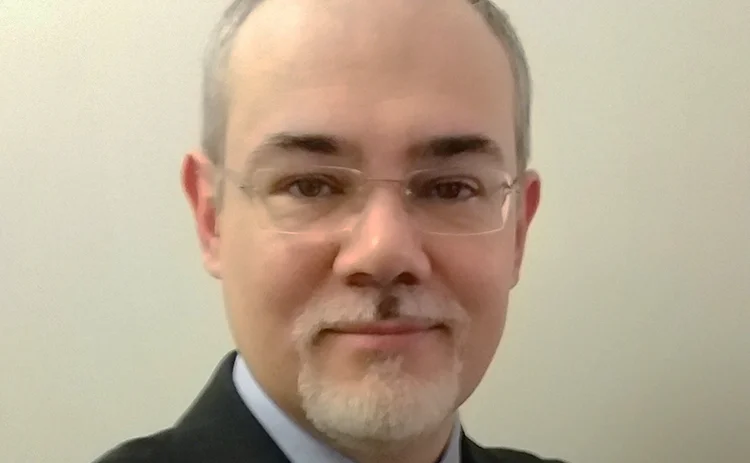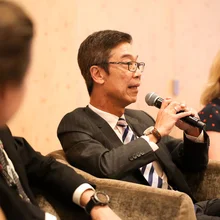
Cloud solution provider of the year: Murex
Asia Risk Awards 2021

Banks have started to embrace the benefits of cloud technologies, but current regulatory fragmentation, particularly in the Asia-Pacific (Apac) region, means that cloud adoption and implementation remain a challenge.
For example, local regulators are still stringent on data sovereignty in Malaysia and Indonesia, according to Anthony Harel, director of client services technology for Apac at Murex. However, Amazon Web Services and Microsoft Azure have recently opened data centres in Jakarta, which should encourage further migration to the cloud.
While in Japan, thanks to the government’s support of cloud adoption with tax and accounting benefits, the cloud is the go-to option for banks, particularly for total cost of ownership (TCO) optimisation. A large Japanese corporation recently finished a project to lift and shift its MX.3 instance from on-premises data centres to Murex’s software-as-a-service (SaaS) offering powered by AWS.
MX.3 is Murex’s flagship platform, which supports trading, treasury, risk and post-trade operations, helping clients meet regulatory requirements, manage risk and control IT costs.
Despite being at different stages in the cloud journey, Murex finds that clients still look to the cloud to accelerate the pace of change, while maximising the return on their technology investment.
The fragmentation in expectations and constraints that financial institutions in the Apac region face convinced Murex to offer a hybrid solution.
Harel says the functional coverage of MX.3 is 100% ready for the cloud: “Being able to do a standard lift-and-shift of MX.3 to the cloud using a standard IaaS [infrastructure-as-a-service] offering didn’t really require any tweak to the software itself.”
Being able to do a standard lift-and-shift of MX.3 to the cloud using a standard IaaS offering didn’t really require any tweak to the software itself
Anthony Harel, Murex
Instead, the adaption has more to do with reviewing how MX.3 connects to the surrounding systems of the bank, which may still be on-premises, and reviewing the installation’s security to adapt to cloud standards.
Firms dealing with various calculations such as value-at-risk, standardised and internal model approaches, standard initial margin model, stress-testing, and any other market risk figures, often need large infrastructure because such workloads are computer-intensive. Also, the calculations must be completed in a limited timeframe.
Murex proposes a solution that enables the just-in-time provision of cloud resources needed for the risk calculation, meaning that firms only pay for infrastructure when it is used. Harel says cost estimates show that the savings, depending on existing on-premises costs, can exceed 90%.
The firm has built specific tooling via the Murex Continuous Delivery Suite to combine the cloud with the productivity of agile and DevOps (development and operations) principles to handle configuration, automated tests, test data and infrastructure as code.
Using MXpipeline, the Murex configuration builders can automate, creating a brand-new installation of MX.3 on the cloud within minutes.
“Once they have finished their development work, they can switch off this newly created MX.3 instance and stop paying for the infrastructure, thanks to the pay-as-you-go model of the cloud,” says Harel.
With the SaaS offering, Murex takes ownership of all technical tasks required to run MX.3 securely and with maximum availability, so customers can focus on their business.
Murex also proposes a business process-as-a-service (BPaaS) offering. New applications can run on the cloud and connect to a customer MX.3 instance through a native integration layer that transfers the necessary data.
Harel says this ensures a fast time-to-market and optimised TCO for solutions that could otherwise be costly and complex to implement, as they would require heavy investments in infrastructure.
Using this model, Murex takes care of the technical tasks to run the software. It also doesn’t require any installation, administration, configuration, upgrading and integration effort on the customer’s side.
Singapore-headquartered OCBC Bank uses MX.3 across all asset classes for front office, middle office, VAR, initial margin, limit control, back office with confirmation, payments and accounting. The bank is also running MX.3 on a private cloud for test and production usage.

Frederick Shen, head of business management for global treasury at OCBC Bank, says the bank has now migrated the entire platform to cloud-based technology. One of the benefits of that is enhanced processing and performance capabilities on the platform.
“This is critical for us as we develop increasingly bigger volumes in our business, and with the cloud technology, we were able to actually run with the business … And with that cloud deployment, what we see is enhanced performance – not only on the trading and sales front of the business, but also on the risk management platform,” says Shen.
Pavilion Energy, a subsidiary of Temasek Holdings in Singapore, also uses Murex’s trading platform solution with risk management to support its growing trading activities and long-term growth strategy.
Murex has relationships with cloud vendors AWS and Microsoft Azure, which enables them to propose to customers the tools and best practices that are well adapted to the MX.3 domain and architecture.
Looking ahead, Murex is working on going further with elastic computing, leveraging containers and serverless computing. It also plans to certify additional databases to offer more IaaS options to clients.
Only users who have a paid subscription or are part of a corporate subscription are able to print or copy content.
To access these options, along with all other subscription benefits, please contact info@risk.net or view our subscription options here: http://subscriptions.risk.net/subscribe
You are currently unable to print this content. Please contact info@risk.net to find out more.
You are currently unable to copy this content. Please contact info@risk.net to find out more.
Copyright Infopro Digital Limited. All rights reserved.
As outlined in our terms and conditions, https://www.infopro-digital.com/terms-and-conditions/subscriptions/ (point 2.4), printing is limited to a single copy.
If you would like to purchase additional rights please email info@risk.net
Copyright Infopro Digital Limited. All rights reserved.
You may share this content using our article tools. As outlined in our terms and conditions, https://www.infopro-digital.com/terms-and-conditions/subscriptions/ (clause 2.4), an Authorised User may only make one copy of the materials for their own personal use. You must also comply with the restrictions in clause 2.5.
If you would like to purchase additional rights please email info@risk.net
More on Awards
Clearing house of the year: LCH
Risk Awards 2025: LCH outshines rivals in its commitment to innovation and co-operation with clearing members
Best use of machine learning/AI: CompatibL
CompatibL won Best use of machine learning/AI at the 2025 Risk Markets Technology Awards for its use of LLMs for automated trade entry, redefining speed and reliability in what-if analytics
Markets Technology Awards 2025 winners’ review
Vendors jockeying for position in this year’s MTAs, as banks and regulators take aim at counterparty blind spots
Equity derivatives house of the year: Bank of America
Risk Awards 2025: Bank gains plaudits – and profits – with enhanced product range, including new variants of short-vol structures and equity dispersion
Law firm of the year: Linklaters
Risk Awards 2025: Law firm’s work helped buttress markets for credit derivatives, clearing and digital assets
Derivatives house of the year: UBS
Risk Awards 2025: Mega-merger expected to add $1 billion to markets revenues, via 30 integration projects
Interest rate derivatives house of the year: JP Morgan
Risk Awards 2025: Steepener hedges and Spire novations helped clients navigate shifting rates regime
Currency derivatives house of the year: UBS
Risk Awards 2025: Access to wealth management client base helped Swiss bank to recycle volatility and provide accurate pricing for a range of FX structures







